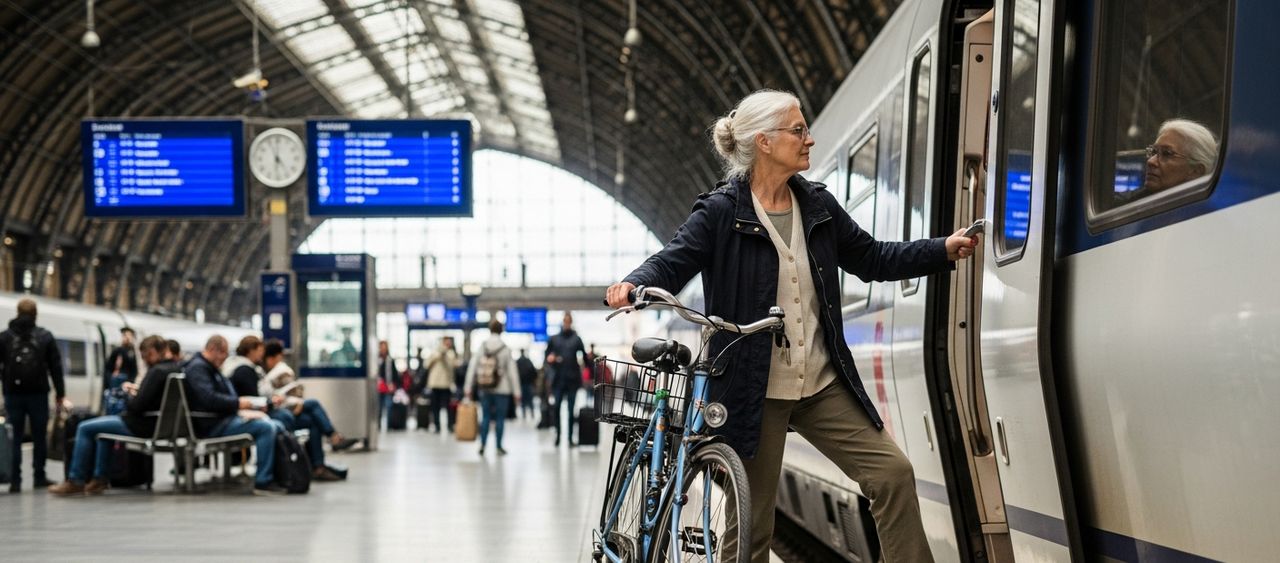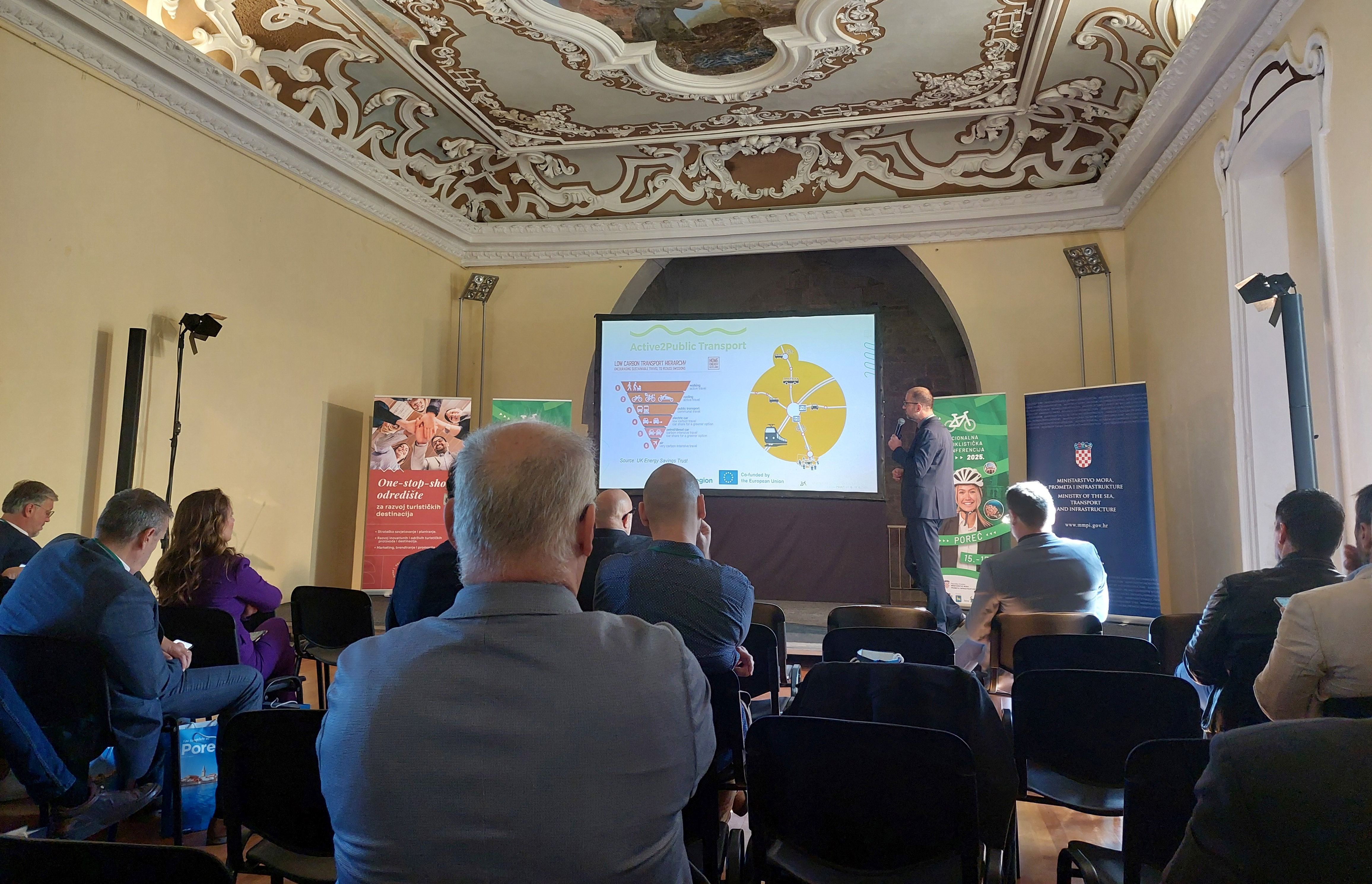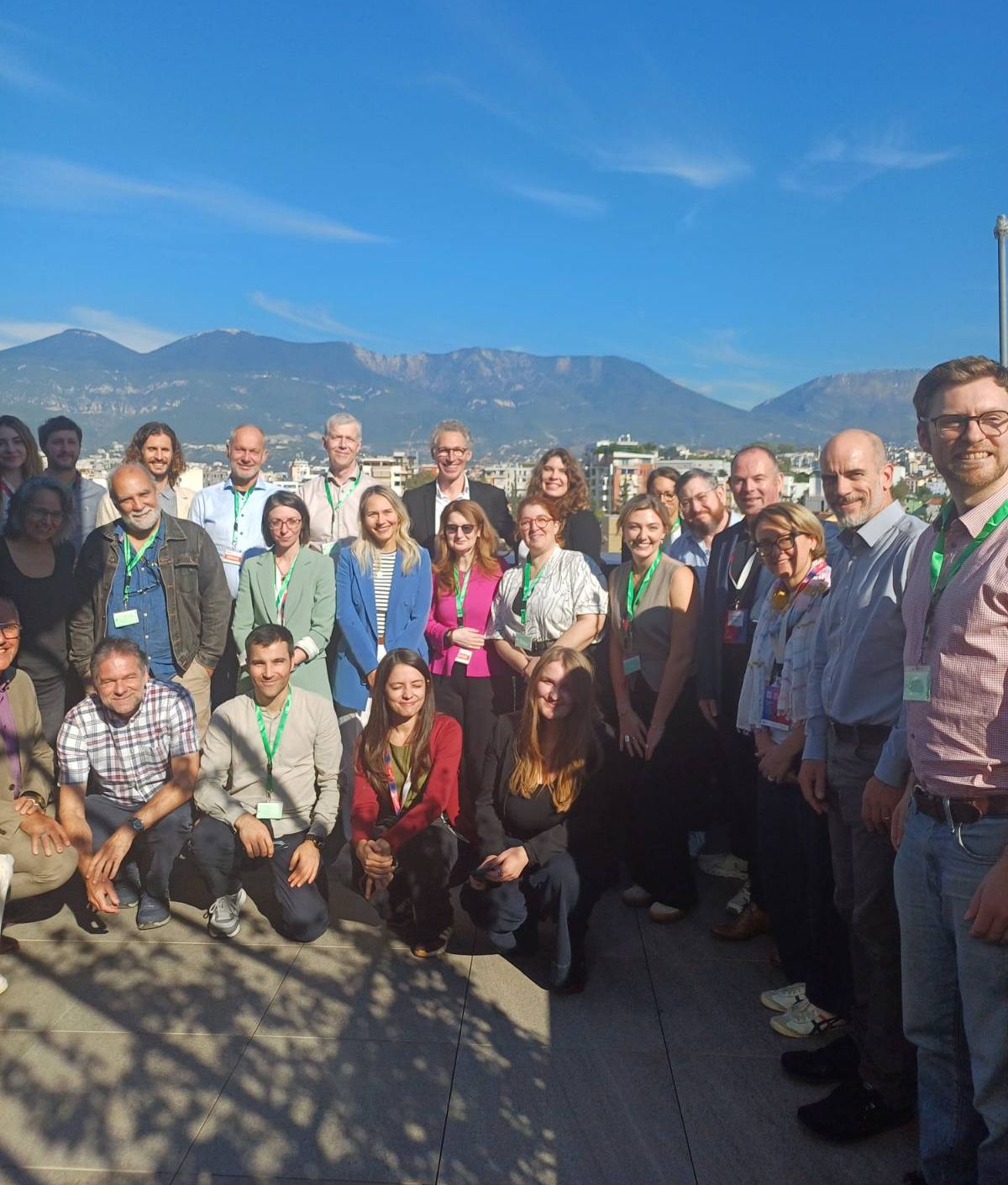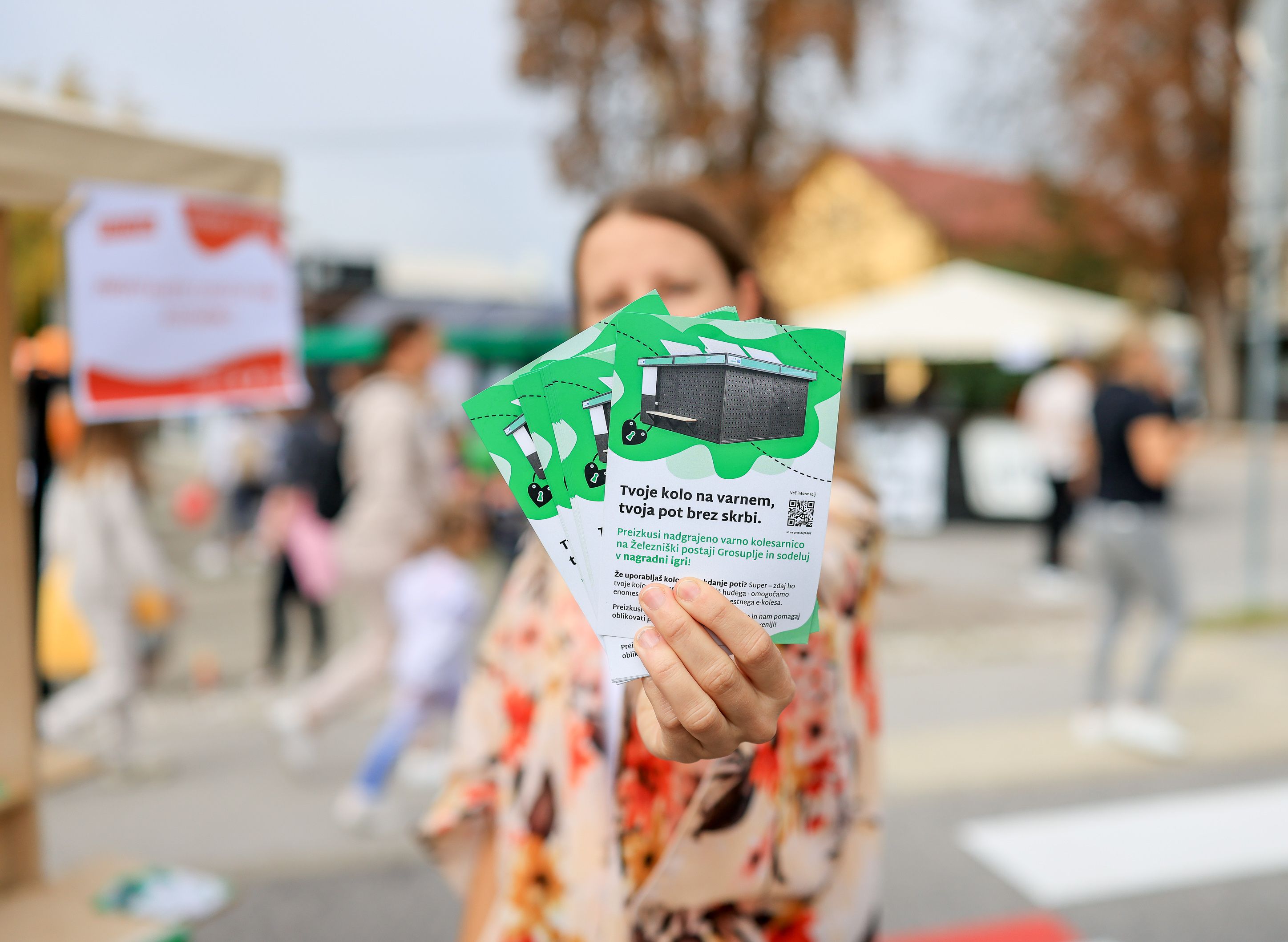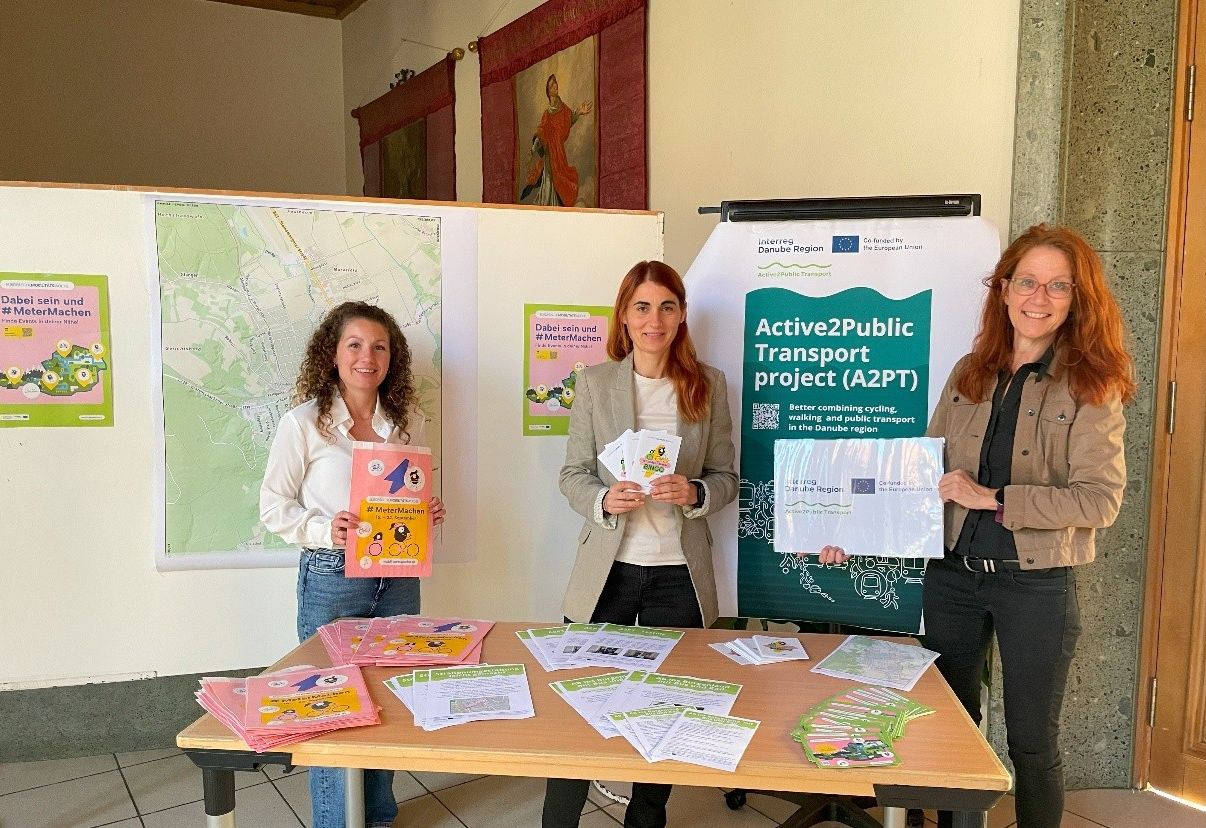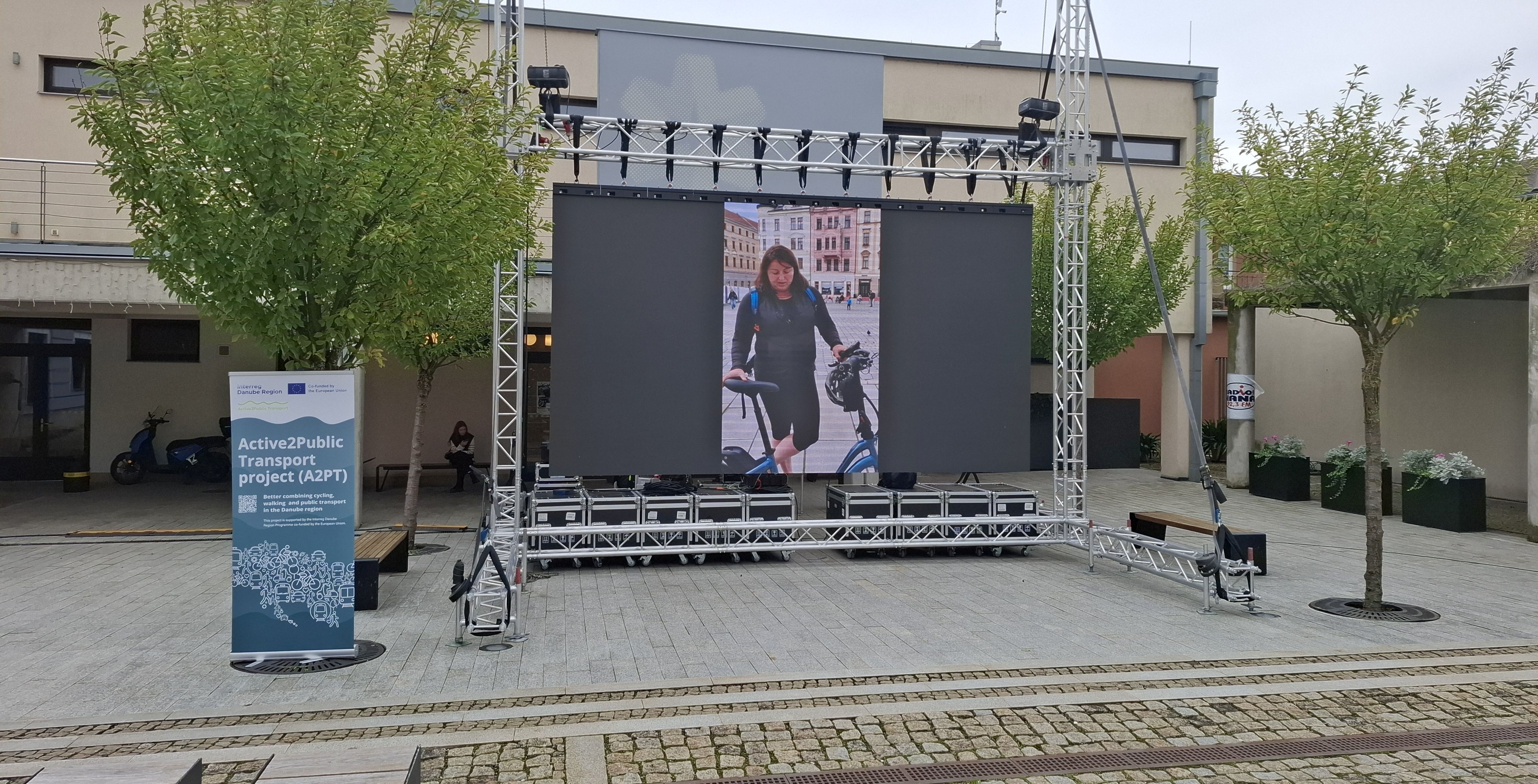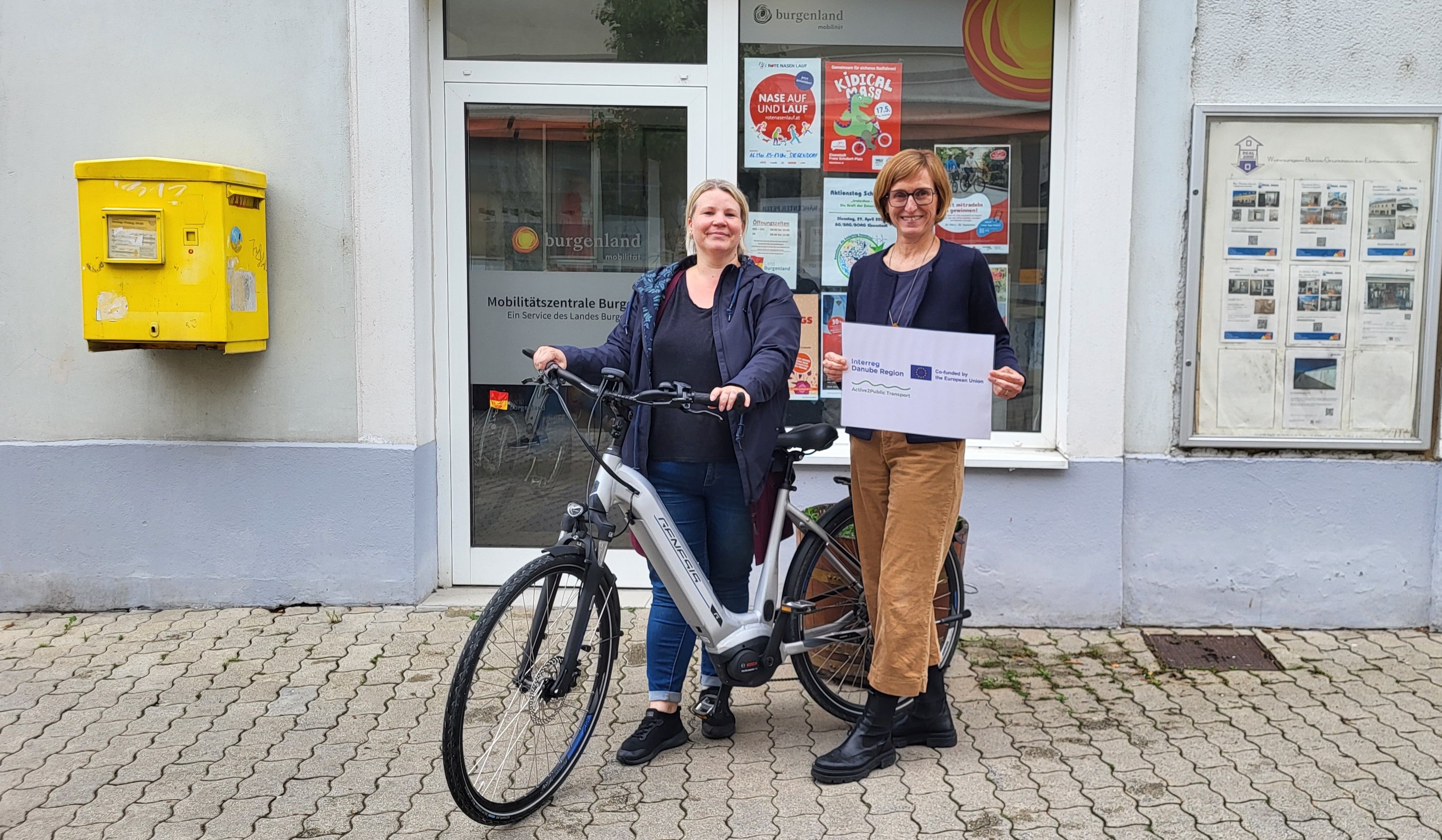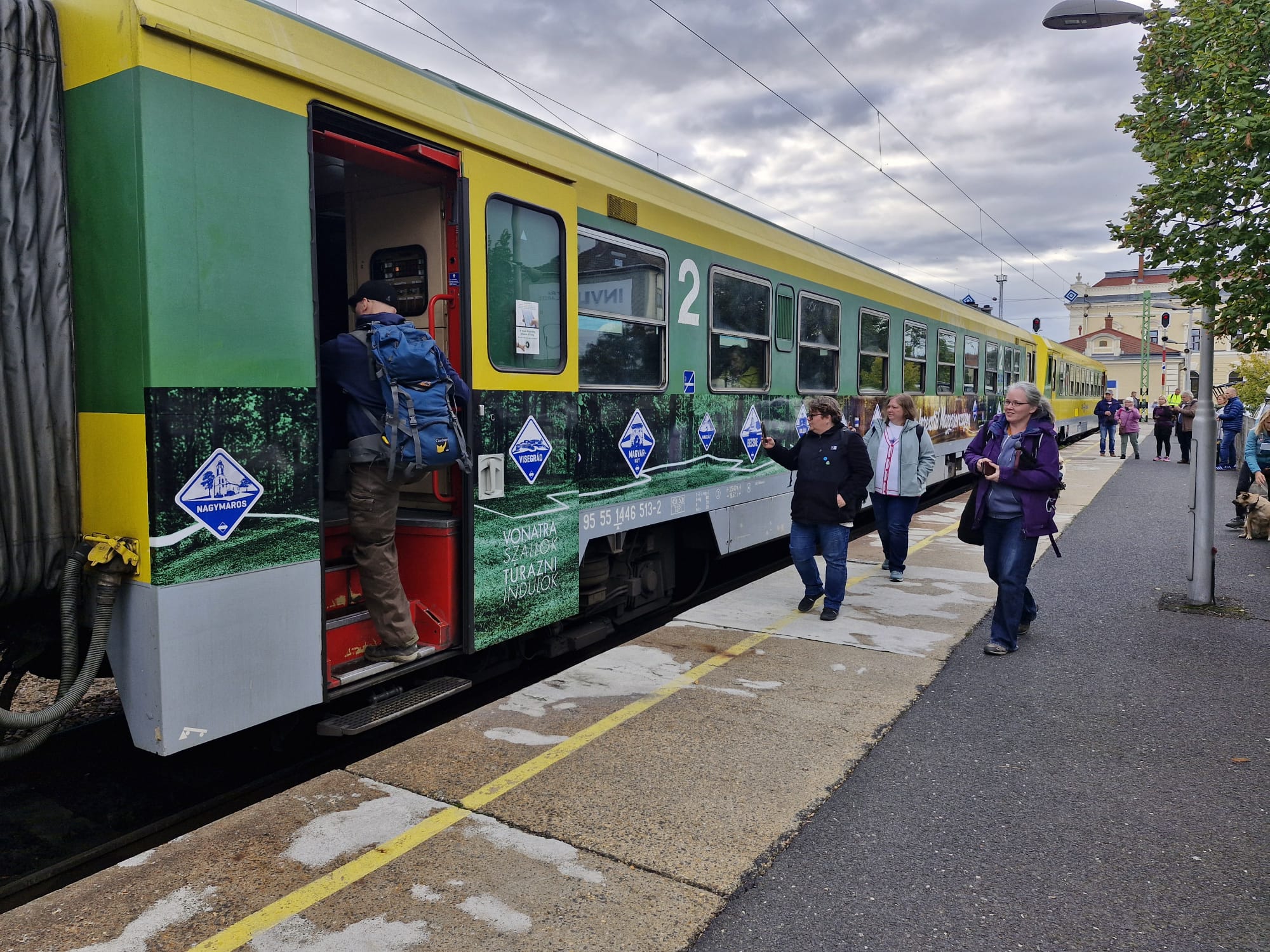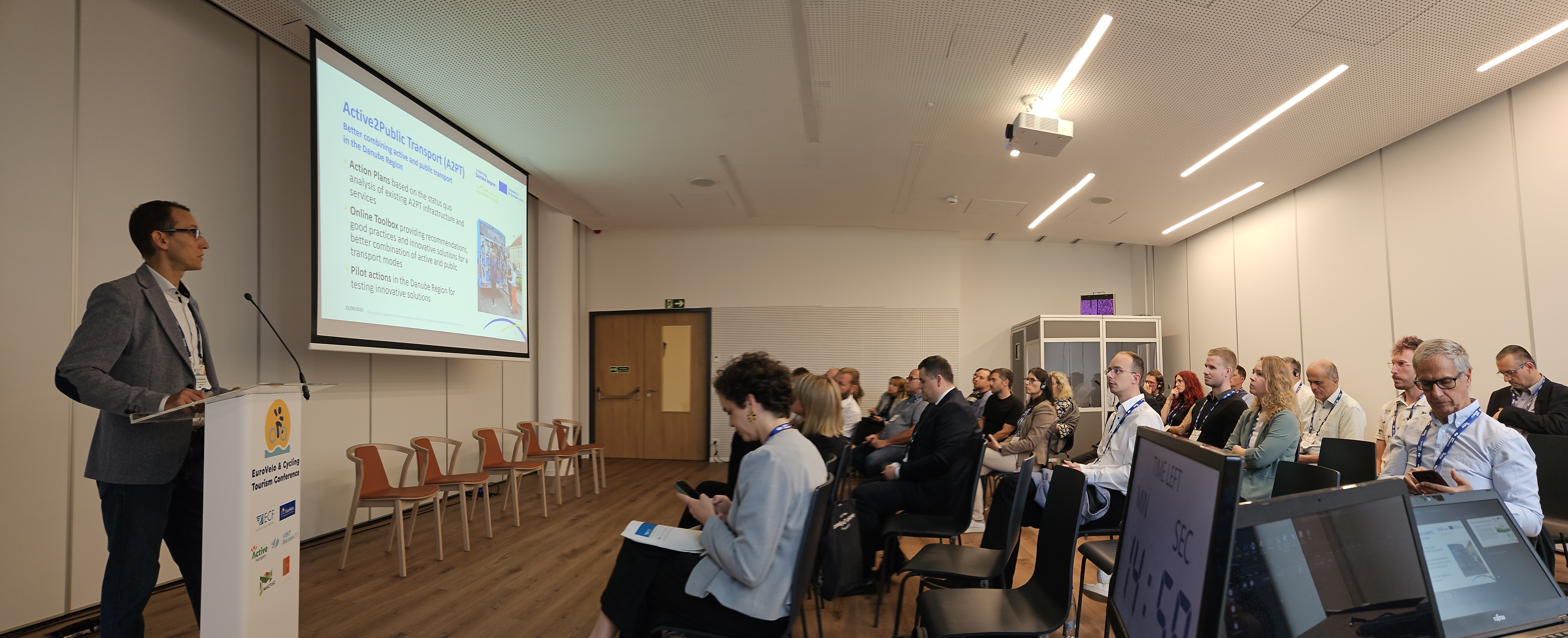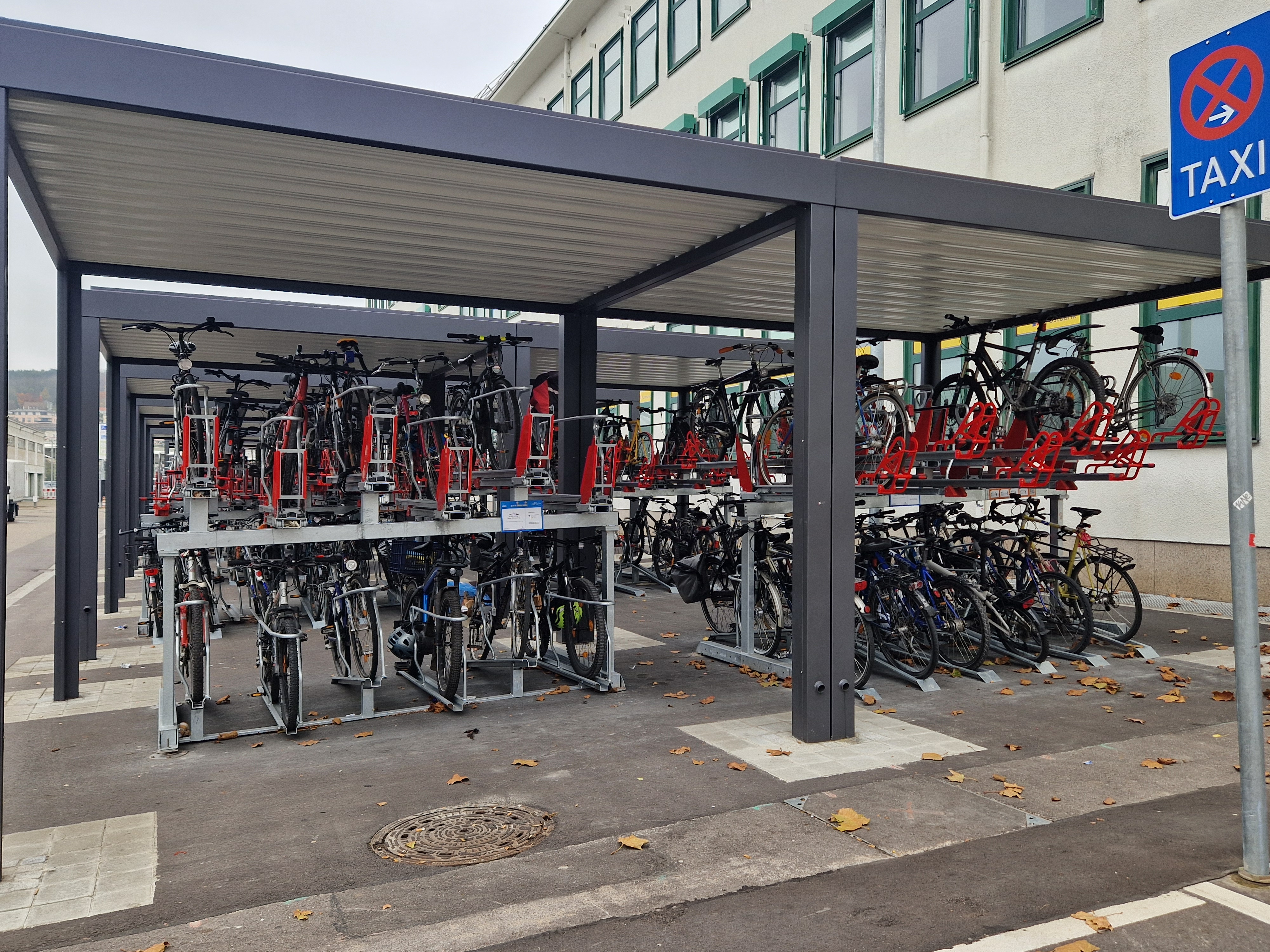
Bridging the Gaps: A2PT Report Reveals Key Insights for Smarter Transport Solutions
New Analysis Highlights the State of Active2Public Transport in the Danube Region
Reducing greenhouse gas emissions from transport and advancing decarbonization require an efficient, well-connected transport system that prioritizes public and active mobility. Integrating public transport with cycling and walking options makes sustainable travel more attractive, reducing car dependency and lowering carbon footprints.
A newly released analysis titled Status Quo of Existing A2PT Infrastructure and Services in the Danube Region sheds light on how public transport stations across the region contribute to these goals. The state of these stations plays a crucial role in making sustainable travel more accessible, convenient, and integrated with active mobility options. Enhancing these infrastructures helps reduce reliance on private cars, thereby lowering emissions and supporting climate objectives. The report, prepared within the framework of the Active2Public Transport (A2PT) project, evaluates the current state of transport integration, accessibility, and infrastructure, while also identifying best practices and areas for improvement.
The findings serve as a valuable resource for local and regional authorities, urban planners, transportation agencies, policymakers, and sustainability advocates. It provides insights into how different transport modes—cycling, walking, and public transport—can be better integrated to enhance mobility options for both daily commuters and tourists.
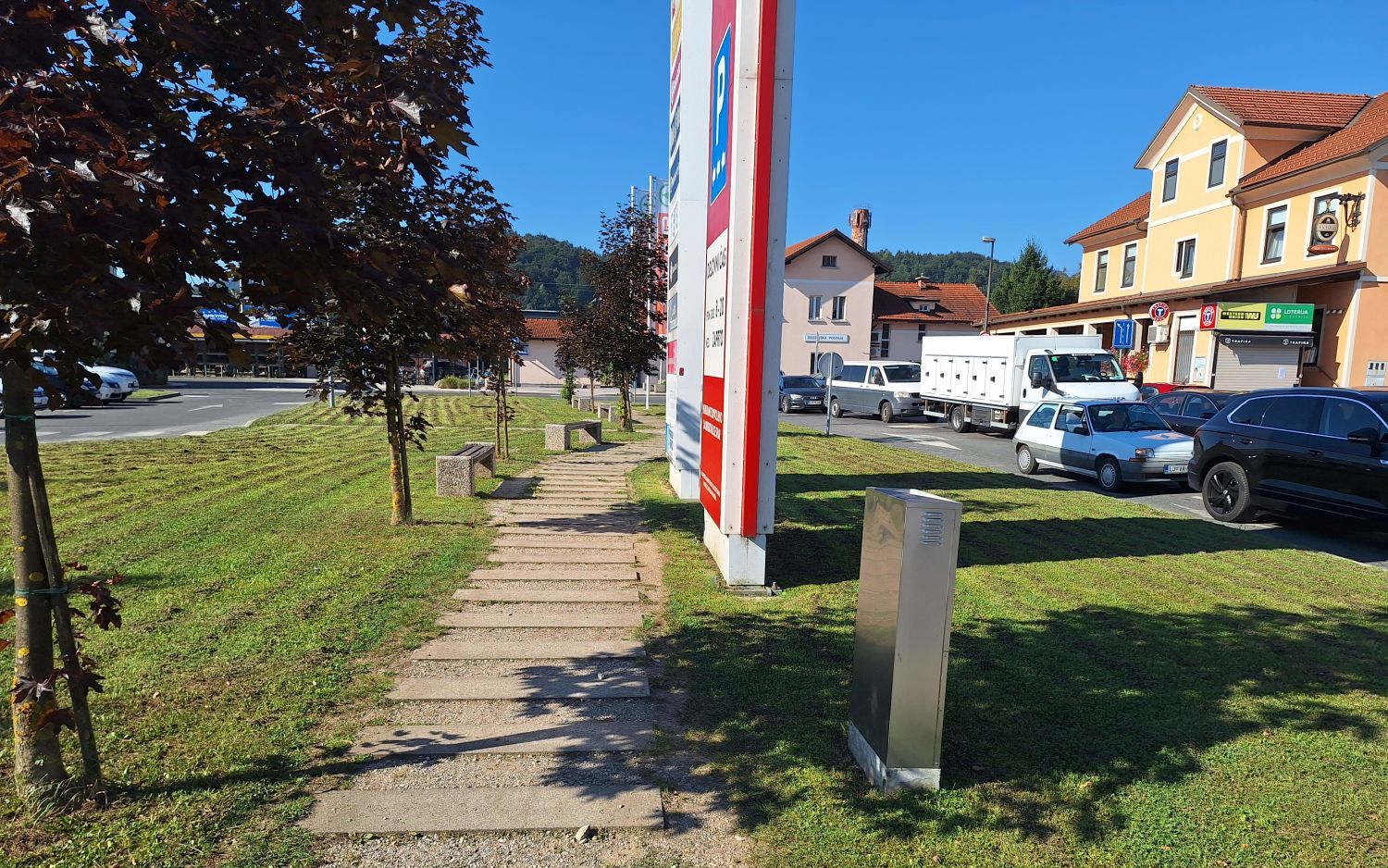
Lack of clear and safe paths for all users between the station and nearby bus stops (Medvode, Slovenia). Photo: © Janez Škulj
Key Findings: Strengths and Weaknesses of the Transport System in the Danube Region
The transport system in the Danube region shows clear strengths but also significant weaknesses that need to be addressed to improve accessibility and sustainability.
Strengths:
Well-integrated metro, tram, and bus networks in major cities.
Increasing investment in bike-friendly infrastructure.
Growing commitment to multimodal transport solutions.
Successful integration of tourism and public transport in areas like Bled (Slovenia).
Advanced digital travel information and modern facilities in hubs like Budapest.
Weaknesses:
Limited accessibility and outdated infrastructure in rural areas.
Insufficient signage, real-time information, and intermodal connections.
Funding constraints and slow implementation of modernization projects.
Poor cycling infrastructure in some transit hubs, limiting multimodal transport efficiency.
Lack of seamless ticketing and service integration across different transport modes.
Opportunities lie in government-driven long-term modernization projects, an increasing priority in improving cycling and walking infrastructure around stations, and enforcing traffic speed limits. Threats such as funding limitations, car-centric policies, and limited coordination between the relevant stakeholders hinder progress.
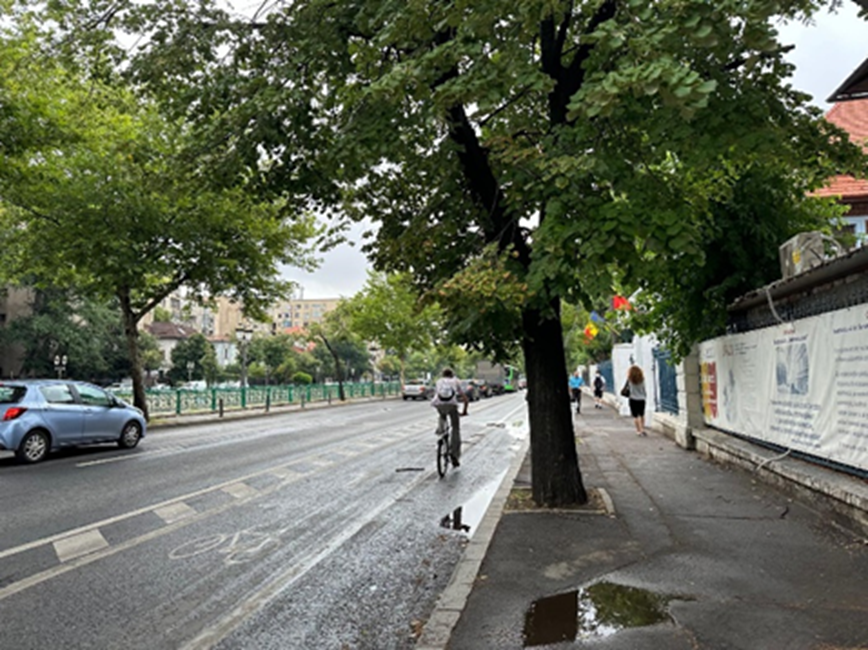
Cycle route from Eroilor metro station to the city center. The route is the most direct option, with no differences in altitude and no detours. Photo: © Emanuela Dimitriu-Bidilică
What Can Be Done? Key Recommendations Based on Best Practices
The report highlights the need to expand multimodal transport options, particularly in rural and suburban areas. To address the above-mentioned challenges, the report outlines a list of recommendations, such as establishing secure and accessible bike parking, improving signage and real-time information systems, creating safe and direct walking and cycling paths, and implementing policies that promote active mobility. The report emphasizes the importance of strategic investment, sustainable planning, and community engagement to enhance public transport systems and foster more sustainable mobility options.
The findings from this analysis will inform the development of A2PT Regional Action Plans, shaping the future of sustainable transport in the Danube region. By fostering collaboration between policymakers, transport providers, and local communities, the report aims to drive meaningful improvements in public transport infrastructure and multimodal mobility solutions.
This research was conducted by a team of experts within the A2PT project, including representatives from ministries, regional authorities, transport operators, specialized organizations, and government agencies focused on transport and mobility from nine European countries.
For more details, visit the A2PT project website: https://interreg-danube.eu/projects/active2public-transport.
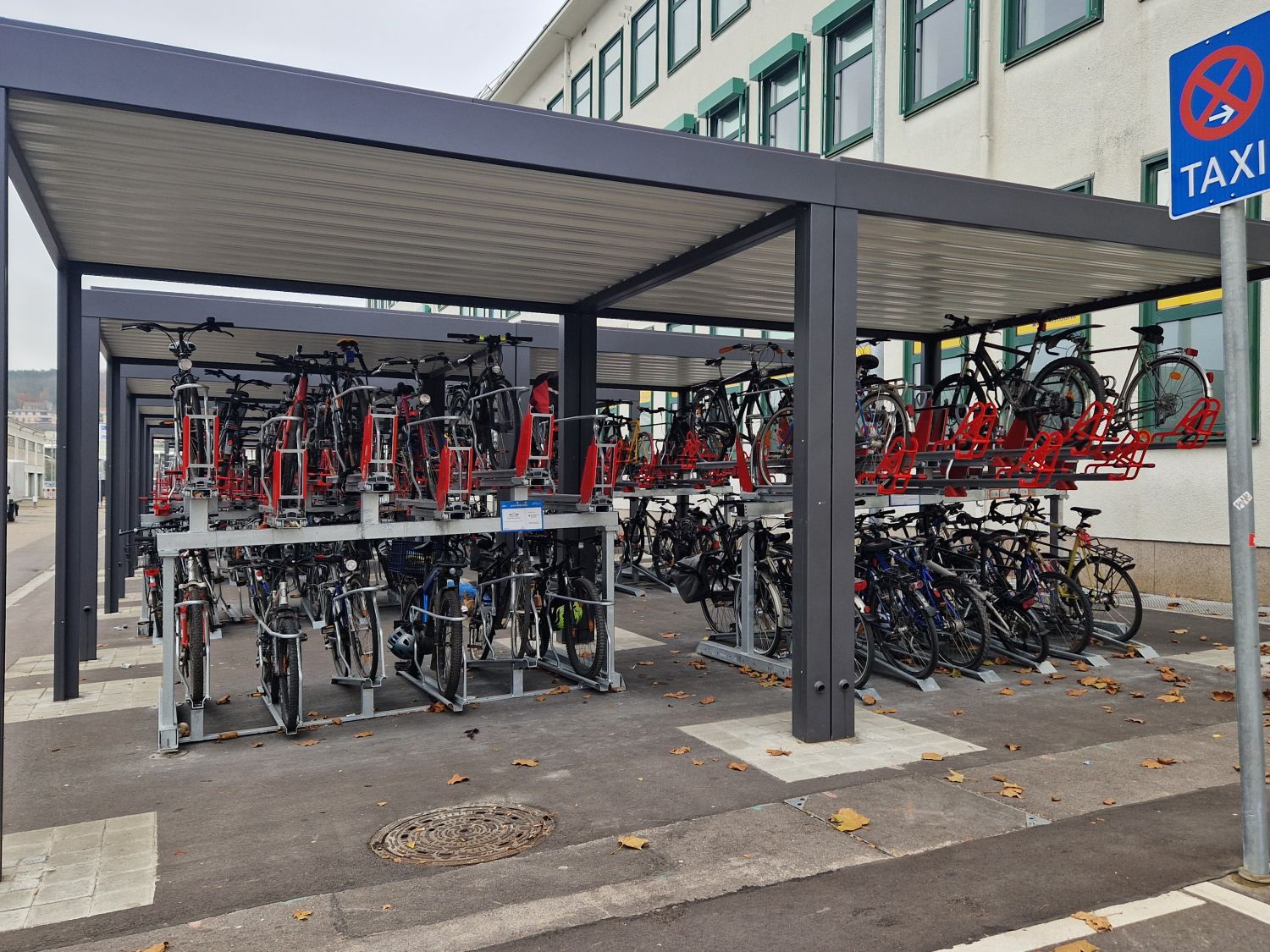
Covered and high-capacity bike parking facility at Ulm main station. Photo: © Jitka Vrtalova
Download the full report
News & Events
Read the most recent updates and explore the upcoming events.

